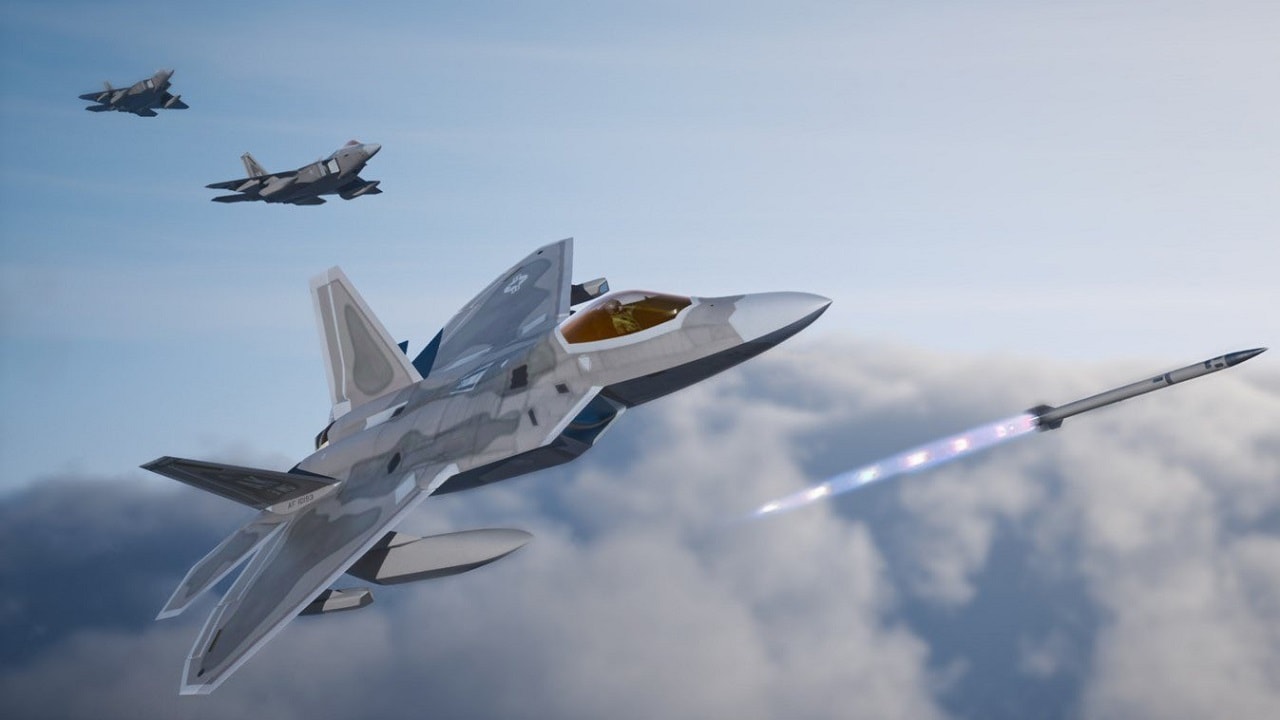F-22 Sent to Deter China? As tensions with China in the Indo-Pacific continue to increase steadily, the U.S. Air Force deployed for the first time F-22 Raptor stealth fighter jets to a key island.
F-22 Raptors from the 525th Expeditionary Fighter Squadron are in Tinian, a small island just to the north of Guam in the Pacific.
F-22 Raptors in the Pacific
The stealth fighter jets deployed for the first time to Tinian as part of testing to determine the feasibility of basing fighter jets there in the event of a conflict with China.
“For them to come support this exercise shows how agile we truly are,” Air Force Colonel Kevin “Jinx” Jamieson, the commanding officer of the 3rd Air Expeditionary Wing, told Air & Space Forces Magazine.
“Guam and the Northern Mariana Islands are a strategic location that requires agility to defend if we find ourselves in a contested and degraded environment,” the Air Force officer added.
Guam is within range of Chinese missiles and would likely be a prime target in the event of a Chinese attack.
Using other nearby islands to disperse aircraft of all types is key for the survivability of the U.S. aircraft fleet.
The F-22 Raptor was recently in the news after it shot down the Chinese spy balloon over the coast of South Carolina.
The first 5th generation stealth fighter jet in the world, the F-22 Raptor is an extremely capable air superiority aircraft with excellent attributes.
It has a long operational range—approximately 1,900 miles with fuel tanks, which would limit its stealth, however—and can carry a wide range of air-to-air missiles and air-to-ground weapons.
Perhaps the most impressive characteristic of the F-22 Raptor is its thrust vectoring nozzles that are attached at the very end of its two Pratt & Whitney F119-PW-100 turbofan engines.
These thrust vectoring nozzles can redirect thrust created by the engines and change the direction of the aircraft midair in seconds.
ACE & FARP, Two Key Concepts for a War with China
The U.S. Air Force has steadily moved toward two key concepts for near-peer conflict with China: ACE and FARP.
Agile Combat Employment, or ACE, intends to disperse aircraft quickly over a theater of operations.
By doing that, the Air Force aims to make it harder for an adversary to target its aircraft but also increase its attack options.
Forward Arming and Refueling Point, or FARP, is directly connected with ACE.
The Air Force and Marine Corps might want to disperse fighter jets all across the Indo-Pacific to increase their survivability and also be more dangerous, but those aircraft need support.
FARP aims to deliver fuel, ammunition, and emergency maintenance to dispersed aircraft. Indeed, any technological and qualitative superiority the U.S. military might have against the Chinese military will be reduced or negated altogether if Beijing can just field more aircraft.
FARP intends to keep a smaller number of aircraft fighting for longer periods.
ACE and FARP will continue to be key concepts in the U.S. military’s strategy against China in the massive Indo-Pacific theater of operations.
MORE: F-35 – The Best Fighter Jet Ever?
MORE: SR-72 – A Mach 6 Bomber?
MORE: Su-57 – Is Russia’s Stealth Fighter Doomed?
Expert Biography: A 19FortyFive Defense and National Security Columnist, Stavros Atlamazoglou is a seasoned defense journalist specializing in special operations, a Hellenic Army veteran (national service with the 575th Marine Battalion and Army HQ), and a Johns Hopkins University graduate. He is currently working towards a Master’s Degree in Strategy and Cybersecurity at the Johns Hopkins University’s School of Advanced International Studies (SAIS). His work has been featured in Business Insider, Sandboxx, and SOFREP.

